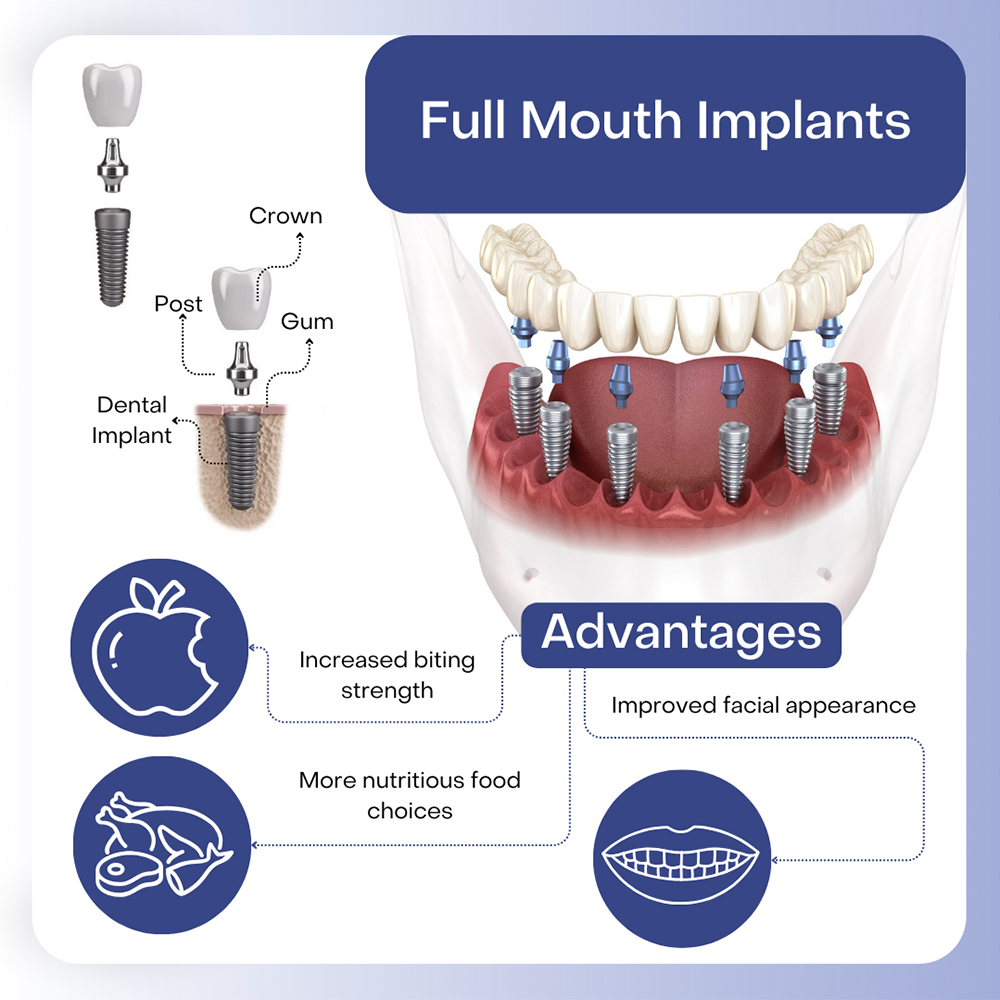The Best Strategy To Use For Dental Sense
The Best Strategy To Use For Dental Sense
Blog Article
Getting The Dental Sense To Work
Table of ContentsThe Basic Principles Of Dental Sense The Best Strategy To Use For Dental Sense7 Easy Facts About Dental Sense ShownFacts About Dental Sense Revealed
are clinical gadgets operatively implanted into the jaw to recover an individual's ability to chew or their appearance. They supply assistance for fabricated (fake) teeth, such as crowns, bridges, or dentures. When a tooth is lost because of injury or condition, an individual can experience difficulties such as rapid bone loss, faulty speech, or modifications to chewing patterns that result in pain.Dental dental implant systems include an oral implant body and dental implant abutment and might likewise include an abutment addiction screw. Kids dental. The dental implant body is surgically inserted in the jawbone instead of the tooth's root. The oral implant abutment is usually connected to the implant body by the joint addiction screw and prolongs through gums right into the mouth to support the attached artificial teeth
(https://yoomark.com/content/dental-implants-including-endosteal-subperiosteal-and-mini-types-offer-both-stability-and)Structure of The Dental Implant System choosing oral implants, speak with your dental copyright about the potential benefits and risks, and whether you are a candidate for the procedure. Things to consider: Your overall health is an essential aspect in determining whether you are a great candidate for dental implants, for how long it will take to heal, and the length of time the dental implant might remain in place.
Cigarette smoking may impact the healing process and decrease the long-term success of the dental implant. The healing process for the implant body may take numerous months or longer, throughout which time you generally have a temporary joint instead of the tooth. the dental implant treatment: Very carefully comply with the dental hygiene instructions provided to you by your dental service provider.
The smart Trick of Dental Sense That Nobody is Talking About
Implant failure can lead to the need for an additional surgery to fix or change the dental implant system. Brings back the capacity to chew Recovers cosmetic appearance Helps keep the jawbone from shrinking because of bone loss Maintains the health and wellness of the bordering bone and periodontals Helps keep surrounding (close-by) teeth stable Improves lifestyle Damage to surrounding natural teeth throughout implant positioning Injury to the surrounding tissues throughout surgical treatment, such as sinus opening Injury during surgical treatment (as an example, fracture of surrounding jawbone) Inadequate function, such as seeming like the teeth do not bite together usually An experience that the tooth hangs or turning in place arising from an abutment screw loosening up Implant body failure (looseness of the implant body) as a result of systemic infection, which might be most likely in individuals with unchecked diabetes mellitus due to local infection in bone and gums sustaining the dental implant body as a result of delayed healing, which may be more likely in individuals who smoke Problem cleaning up the gums around the implant, resulting in poor oral health Unattended gum condition Post-surgical feeling numb as a result of nerve impingement or damages Constantly inform wellness care providers and imaging specialists that you have dental implants prior to any kind of magnetic vibration imaging (MRI) or x-ray treatments.
FDA is not familiar with any type of adverse events reported for MRI or x-ray procedures with oral implants. Dental implants systems are commonly made from products that adhere to international consensus criteria of the International Company for Standardization (ISO) or ASTM International. These requirements have details of what makes a risk-free product.

A dental implant is a framework that changes a missing tooth. With screw-like gadgets, the cosmetic surgeon inserts a dental implant right into the jawbone, and it works as an anchor for a synthetic tooth, called a crown. A gadget called an abutment links the fabricated tooth to the dental implant. The crown is personalized to fit the person's mouth and match the color of their teeth.
4 Simple Techniques For Dental Sense
Some people are not eligible for dental implant surgical treatment. It is for dental specialists to operate people with: intense illnessuncontrollable metabolic diseasebone or soft cells condition or infectionIf these concerns are fixed, a person can have the surgery. In, dental surgeons avoid from running on people with: If people with any one of the above undergo dental implant surgery, there is a higher risk of the dental implant failing.

Dental implant surgical procedure is a personalized process. Provide you time to heal. Attach the post and final crown, bridge or denture.
Next look these up off, your doctor will very carefully position the oral implant right into your jaw. If your implant is near the front of your mouth, your dental professional will certainly make a temporary tooth for you to wear till you heal.
Not known Facts About Dental Sense
Your company can inform you what to expect in your situation. During the recovery stage, your jawbone needs to fuse to the dental implant. This process, called osseointegration, is important for security and lasting success. This procedure can take anywhere from 3 to 9 months. Sometimes, it might take longer.
As soon as your dental implant heals, your dental practitioner can affix the abutment (little adapter message) and your last remediation (crown, bridge or denture). This generally takes about one hour to complete and may need a second minor surgery. You shouldn't really feel any pain during your oral implant procedure since your provider will utilize medication to numb your gums.
Report this page